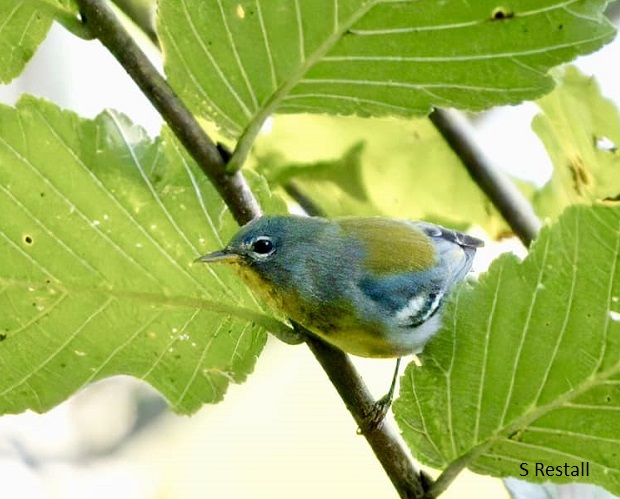


First Printed:
September 17, 2000
When the sun disappears behind the turning earth, most of us think of retiring to our homes and beds. The small songbirds of the forests do as well, nestling among the thick branches of an evergreen bough or the tangle of a thick bush to rest through the darkness until the inexorable cycling makes the sun reappear on our other horizon.
But there is another cycle that interrupts that regular routine, the cycle of the tilted earth around the sun, showing first its northern face to the furnace of light and heat on one half of its orbit, then the southern face during the other half. Our two-faced planet is fickle but fair in its willingness to share the sunbath of summer.
We have had our time, and now the creatures must either endure or flee, following the rays of the sun. To do this, the songbirds must forego their sleep and work through most of the night. As darkness deepens, they now come alive, restless and eager, driven by some force within their brains.
Families launch into the moonlit night and rise above the trees, calling to each other and joining with other songbirds that all feel the urge to fly. They prefer to start on a night when the sky is clear, the moon is bright, and the winds are gentler, but they do not know what weather awaits them farther down the flyway.
First, the birds that must reach the distant tropics begin the journey in late August or September. These are the flycatchers, thrushes, vireos, and warblers, who need insects in vast numbers to fuel their tiny bodies. They have found plenty here in the heat of late summer, and they have gorged, adding ounces of precious fat, which they burn as they work the night through.
Our own nesting birds leave us quickly and they are visitors to some other shores or ridges to our south, but the breeding birds of Quebec first head for us, dropping into our trees as dawn approaches. They need a quick nap in the cool of the morning before the sun rouses the insects to life and spreads them across the banquet table of forest leaves.
Then you can rise yourself at a pleasant hour and walk in the woods to find these flocks of feeding songbirds. Sometimes you may not meet a single bird for quite a while, and hear only an occasional chip in the forest, since the full songs of Spring are only a memory.
Then suddenly a leaf will move or a twig tremble, then another and another, and the trees are dripping with busy diners. This is the time it is most valuable to purse your lips and make a loud pishing sound, for the birds will come closer with curiosity and alarm, though never ceasing the endless search for tiny worms.
The treetop migrants move slowly through the woods, sampling each banquet table in turn. There is a redstart, fanning its showy tail, either an orange and black male, or more often the yellow and gray of females and young birds. Then a few magnolia warblers or black-throated green warblers come out, slightly duller in their fall plumage, but still showing telltale colors.
Even more welcome is the sight of a parula or a Cape May warbler, which breed farther north and are seen here only on migration. Each warbler or vireo species carries its own special flag of colors, sometimes vibrant, often yellow, but always distinct.

The flycatchers and thrushes are plainer, and some are so similar you need a long, close study and perfect light to tell the difference. But they are more likely to perch in the open, the flycatchers sitting still on the bare branches and the thrushes lurking quietly near the forest floor.
Many of these birds fly as far as they can, and often they reach the coast, where they pile up in larger numbers. Then you can find fifty birds in one tree and hundreds in a morning's walk, with a few rare ones as part of the mix. Search for them while you can, for they will be gone when the frosty chills descend upon us.